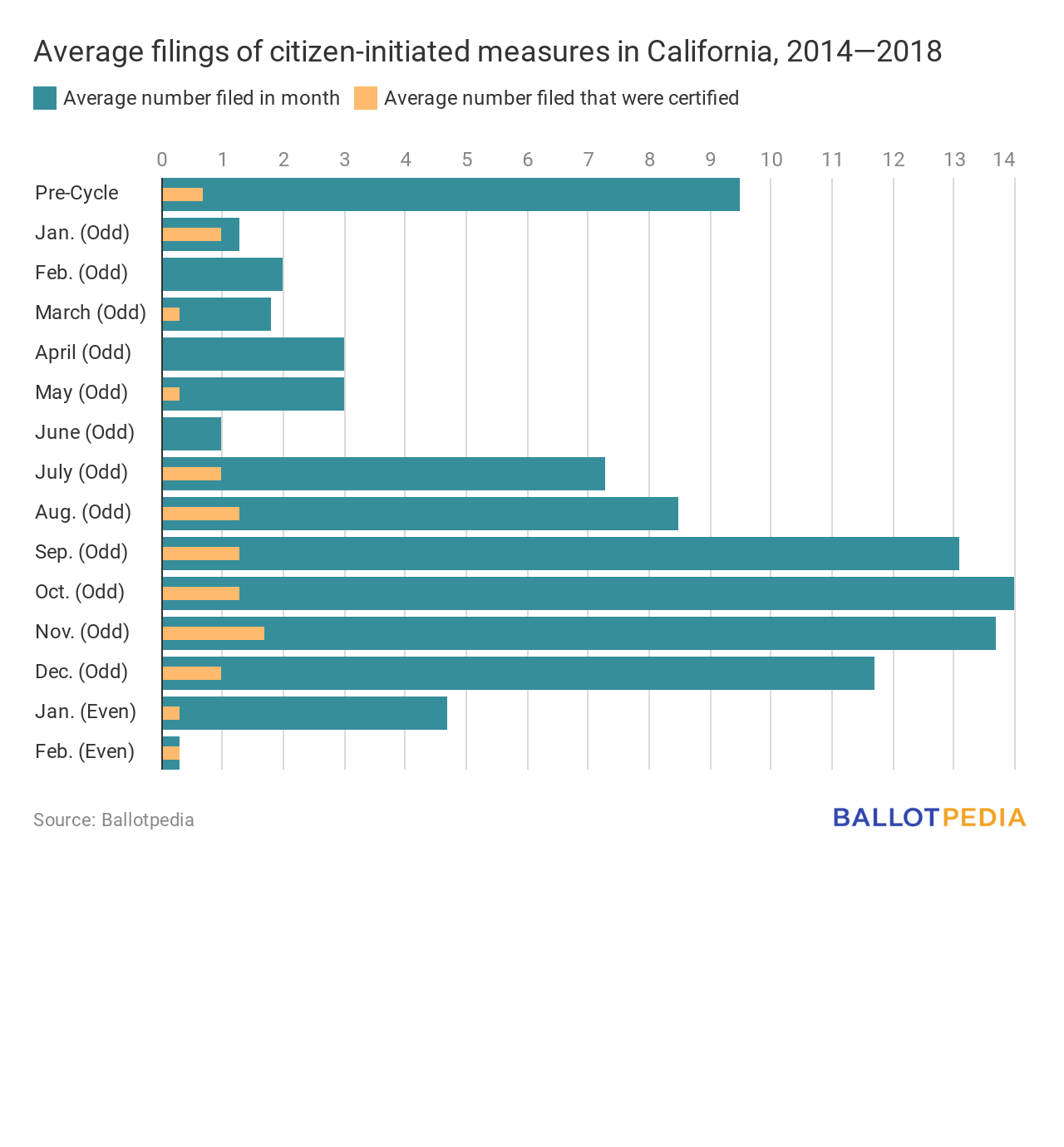| Today’s Brew highlights an analysis of the closely-decided state legislative races from 2018 + previews California’s 2020 ballot measures |
|
|
 |
Welcome to the Friday, August 30, Brew. Here’s what’s in store for you as you start your day:
- 88 state legislative races in 2018 were decided by a margin of 0.5 percentage points or less
- How many ballot measures will California voters decide in 2020?
- What’s the Tea?
|
88 state legislative races in 2018 were decided by a margin of 0.5 percentage points or less
At Ballotpedia, our team of researchers never stops analyzing election data in search of trends and interesting facts. Today I wanted to share with you the work they did studying 2018’s state legislative races, where 87 of the nation’s 99 state legislative chambers held regular elections for 6,073 seats.
In 2018, 88 regular state legislative races were decided by a margin of less than 0.5 percentage points. This includes 16 elections decided by 10 or fewer votes and two which were decided by a single vote.
Eighteen of these 88 races took place in New Hampshire—which has a 400-member House of Representatives. As of the 2010 census, New Hampshire state House districts represent an average of 3,291 residents each.
Here are five more facts:
- The average margin of victory in all 2018 state legislative races—defined as the difference between the vote share of the winning candidate and the runner-up—was 25.8 percentage points. By comparison, the average margin of victory across the 467 congressional elections—both House and Senate—was 29.2 percentage points.
- The chamber which had the smallest average margin of victory was the South Dakota House of Representatives at 7.7 percentage points.
- Major-party candidates won 17.8% of the seats up for election by margins of 10% or less; 573 of those seats were won by Republicans and 505 by Democrats.
- The average nationwide margin of victory for seats won by Democrats was 26.8 percentage points. For Republicans, it was 22.3 percentage points.
- In 2020, state legislative seats in 4,798 districts which held elections in 2018 will be up for election again. Republicans won seats in 2,454 of those districts in 2018, while Democrats won seats in 2,375.
There is so much more data about 2018’s state legislative elections—broken down by state and chamber—that you can explore by clicking the link below.
Learn more
|
BP Analysis: Half of California’s 2020 initiatives will be filed in the next four months
Fall is the most active period in California for ballot initiative filings. So far, 27 citizen-initiated measures have been filed targeting the November 3, 2020, election. Based on historical data, about half of the state’s 2020 initiatives will be filed in the next four months.
So far, three statewide ballot propositions have qualified for the ballot.
- California voters will decide two citizen-initiated measures designed to amend or repeal criminal sentencing and supervision laws passed since 2011: the Criminal Sentencing Initiative and Cash Bail Referendum.
- Voters will also decide on an amendment to Proposition 13, as we’ve covered in the Brew. Proposition 13 was passed in 1978 and requires governments to tax residential, commercial, and industrial properties based on the property’s purchase price. The new measure would tax commercial and industrial properties—subject to certain exemptions—based on market value.
Before initiative proponents begin collecting signatures, they must file their measure with the attorney general and receive a ballot title and summary. This is the first time the public sees a potential initiative. Based on data from the last three election cycles, the last four months of the preceding odd-numbered year have seen an average of at least 12 filings each month. In those cycles, an average of half of the citizen-initiated measures that qualified for the ballot were filed during this period between September and December.
If the trend from the past three election cycles continues in 2020, then approximately half of the citizen-initiated measures that will be certified for the ballot have not yet been filed.
One difference between previous election cycles and 2020 is the number of signatures required for an initiative. The 2018 voter turnout was 70 percent higher as compared with 2014. This changed the signature requirement for constitutional amendments to nearly 1 million signatures and for statutes to over 623,000. The state has suggested that initiative campaigns submit petitions by March 3, 2020.

Learn more→
|
|

Eleven years ago yesterday—on August 29, 2008—Republican presidential candidate John McCain introduced Sarah Palin as his vice presidential candidate during a campaign rally in Dayton, Ohio. Palin was the second U.S. woman to run on a major party ticket for president.
When voting, how much does a presidential candidate’s running mate impact your decision?
|
|
|